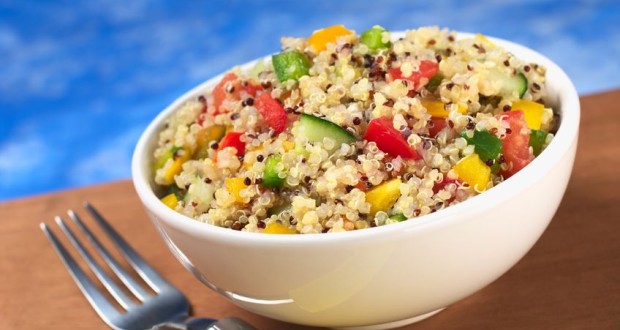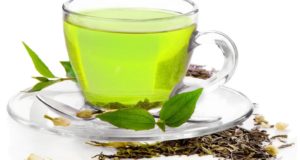When it comes to food, people tend to be weary of the unknown. A certain item might be packed with nutrients and amenable to the taste buds, but if it has a strange name, bizarre appearance or hails from a remote part of the world, many people will not even give it a second glance. With that stated, it would be wise to avoid such a mistake when considering quinoa, a grain that has received a fair amount of good publicity in recent years.
Historical Background
The history of quinoa is almost as rich as the grain itself. Quinoa (pronounced KEEN – wah; the correct pronunciation of this item should prove especially useful when asking about it at your local grocer) can trace its origins back to high altitudes of the Andes, a mountain range adorning the entire west coast of the South American continent. The Incas, one of the most advanced civilizations of the pre-Columbian Americas, held quinoa in especially high regard. Inca warriors were given quinoa before battle, as tribal elders believed the grain would provide them with the fortitude and willpower to crush their battlefield opponents. Quinoa was viewed as a sacred crop, and was therefore used for key religious ceremonies. Along with maize (corn), Quinoa formed the cornerstone of the average Incan diet.
All of this changed abruptly with the arrival of the Spanish conquistadors in the opening half of the sixteenth century. Wracked by civil war and facing advanced European technology, the mighty Inca Empire was completely subjugated by the Spanish within the span of a year. In the eyes of the new Spanish overlords, quinoa was a little more than a relic of the Inca’s pagan past, and was ruthlessly stamped out from the area’s culture and cuisine. Despite the best efforts of the Spanish, small amounts of quinoa continued to be grown in secret by the natives, while wild stalks of quinoa grew undisturbed high up in the Andes Mountains.
Quinoa’s introduction to North American shoppers is not only very recent, but also largely coincidental. In the 1980s, two Americans stumbled across the plant in Chile (the modern country encompassing much of the old Incan Empire), and begin growing the plant in the favorable climate of Boulder, Colorado. In the proceeding quarter century, quinoa has enjoyed a worldwide renaissance in popularity, to the point where the country of Chile exported $87 million worth of quinoa to the US in 2010 (Peru and Bolivia also export significant amounts of this crop).
Health Benefits
So why has a formerly obscure plant from the Andes Mountains become so popular in such a short timeframe? The answer lies in quinoa’s immense nutritional value, which is virtually unmatched by competing grains. After reading about quinoa’s health benefits, you will probably understand why the Incas thought so highly about this nutrient-rich plant.
Packed With Protein – It may seem strange to get protein from a grain, but you’ll be hard pressed to find a better non-meat source of this muscle-building ingredient. One cup of cooked quinoa contains over 8 grams of protein. Eating that one cup goes a long way towards fulfilling your daily protein requirement; the recommended daily allowance (RDA) of protein for men aged 19+ is 56 grams. For non-pregnant, non-lactating women over the age of 19, the amount is 46 grams.
In addition to the quantity of protein in quinoa, the quality of protein found in this plant is also worthy of notice. Quinoa contains complete proteins, which posses all of the amino acids used by the body. It would be an understatement to claim that Amino acids are an essential component of a healthy diet. Among other things, these acids enable the body to build and repair tissue, create new strands of DNA, produce disease-fighting antibodies and transport oxygen.
Filled With Fiber – It can safely be said that fiber is to your digestive system what protein is to your muscles. In short, your gut needs a steady stream of fiber to run smoothly and efficiently. Fiber protects against such unpleasant conditions like diarrhea and constipation. As if that weren’t enough, a healthy intake of fiber can greatly reduce your risk of developing high blood pressure and diabetes.
With such an impressive résumé, you would probably be would like to know if quinoa is a good source of fiber. As with protein, quinoa stands head-and-shoulders above the competition when it comes to fiber content, possessing twice as much of this nutrient as other grains. A single cup of cooked quinoa features 5 grams of fiber, or 21% of the RDA.
A Great Source of Iron – Iron may not get the press that protein and fiber receive, but it is nonetheless a key mineral that plays a significant role in your overall health. Iron is essential for manufacture of new blood cells inside the body. Additionally, iron is indispensable for the formation of hemoglobin, a type of molecule that transports oxygen to organs and tissues within the body (fun fact: hemoglobin is also responsible for blood’s red coloring). One cup of quinoa provides the body with 15 percent of the iron it needs each day.
A Building Block for Your Bones – Quinoa’s protein isn’t just beneficial for your muscles. Once digested by the body, protein facilitates the absorption of calcium by the body’s bones. Protein also assists in the creation of collagen, an important bone building material.
A Good Way to Get Riboflavin and Magnesium – Just one cup of cooked quinoa offers 12% RDA of riboflavin and 30% RDA of magnesium. Riboflavin helps channel oxygen to the organs, while simultaneously helping the body to utilize other nutrients. For its part, magnesium helps the body convert food into energy, create proteins and maintain the immune system. A steady consumption of magnesium also keeps your bones strong and durable.
 Natural Knowledge 24/7 Educate yourself with nutrition, health and fitness knowledge.
Natural Knowledge 24/7 Educate yourself with nutrition, health and fitness knowledge.






